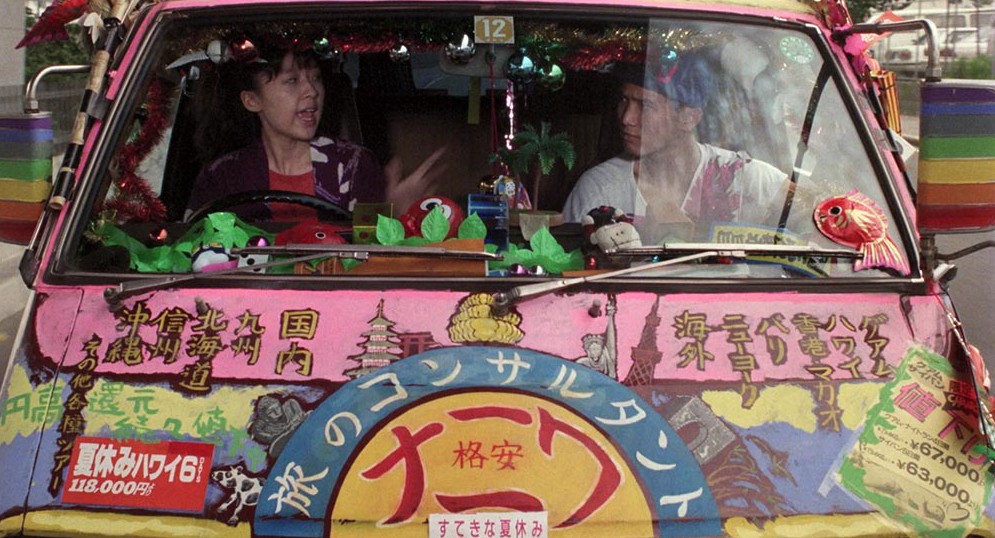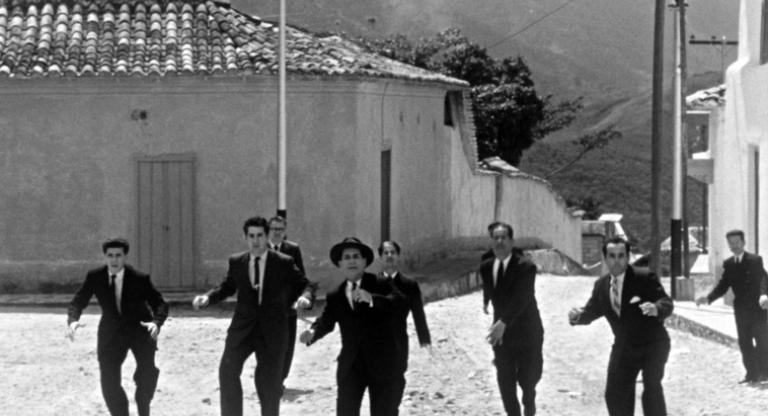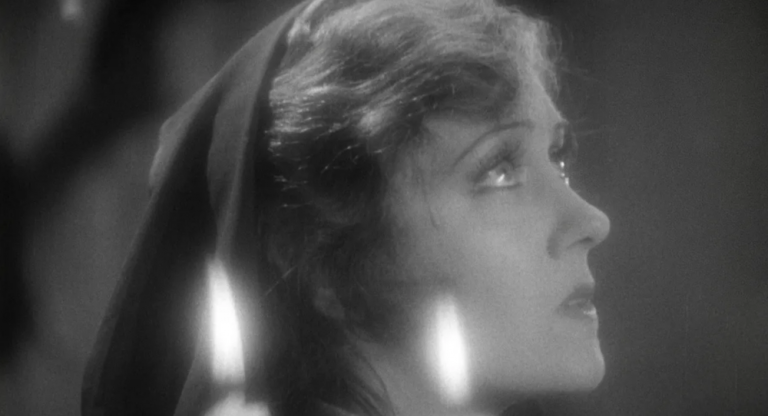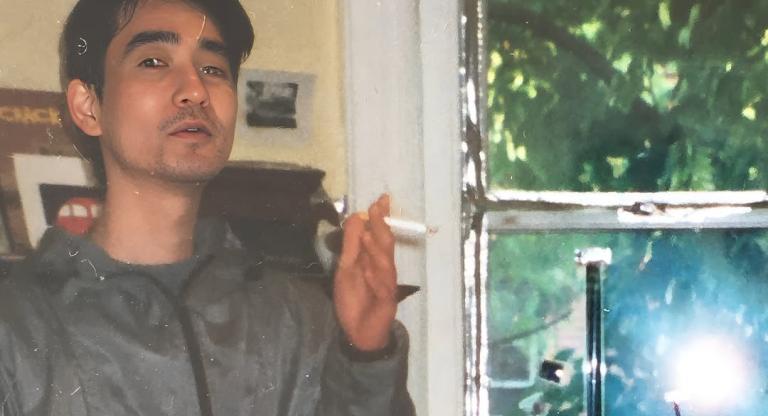Japanese director Masashi Yamamoto’s 1980s filmography stands out against the wild works of his punk peers. While filmmakers like Sogo Ishii and Shinya Tsukamoto saw the decline of major Japanese studios at the tail end of the 1970s as an opportunity to create assaulting images, Yamamoto quickly set himself apart by crafting hypnotizing ones. His rebellion during this jishu eiga, or “autonomous film,” movement was less concerned with criticizing the world around him and more involved in developing a new one wherein his original ideas could germinate slowly and anarchically in peaceful hermeticism.
Robinson’s Garden (1987) and What’s Up Connection (1990) offer a sampling of the unsung filmmaker’s free-spirited work of this period. Aside from their pop-art direction, courtesy of Yuji Hayashida (August in the Water, 1995; Hara-Kiri, 2011), both films are united by a renegade drive to abandon the world, its people and its customs.
In Robinson’s Garden, wayward drug dealer Kumi (Kumiko Ota) comes across an abandoned warehouse on the outskirts of Tokyo that hosts an immense garden and decides to move in. She finds a site for self-expression away from the neon lights and busy streets that characterize Japan’s economic bubble era, a period of overzealous speculation and prosperity before the storm of economic stagnation that seized the ’90s. Her solitary existence—away from all the businessmen involved in keeping the nation’s monetary treadmill speeding, and from all the hippies and punks taking advantage of the boom times to monetize their lifestyle—makes Kumi a New Age Robinson Crusoe, not by circumstance but by choice.
This bold lonerism can be traced back to Yamamoto’s experience among squatters following the premiere of his Carnival in the Night at the 1983 International Berlin Film Festival. Following the screening, he befriended a group of Kreuzberg punks who hosted him in their concrete squats for a few days. He didn’t understand them and they didn’t understand him. Yet he recognized in his hosts a desperate need to escape into ruin, one that he shared and one which manifested elsewhere in New York’s No Wave scene, the post–Velvet Revolution Prague underground, and other concurrent outsider movements around the world.
“I realized that stupid people are the same all over the world,” noted Yamamoto about his time in Berlin. “We were on the same wavelength.” Charged with this revelation, Yamamoto’s subsequent films chase this stupidity to its extreme, asking if a stupid world (one beyond organized language and living) can escape the destiny of a global order bursting at the seams with rationality.
What’s Up Connection situates this question at the heart of its narrative. When a family from the secluded fishing village of Po Toi O in Hong Kong are put under threat of expropriation by a multinational conglomerate looking to erect a new world trade center on their premises, they hack its main developer’s credit card and start spending ruthlessly and irrationally. Altogether, they rack up a $170 million dollar tab on postcards, gold teeth, multicolored furnishings, and myriad other knick-knacks, bankrupting the development with senseless spending.
These are Yamamoto’s politics: to squat, to squander, and to soil reality. Whether anyone takes notice is beyond him; his unceasing state of resistance exists beyond society and blooms by virtue of its separation from its norms. “I only plan to make the kinds of films I want to make,” he has said, “and aim at nothing more than a small circle of spectators.”
Robinson’s Garden and What’s Up Connection screen December 2–8 at Metrograph.



